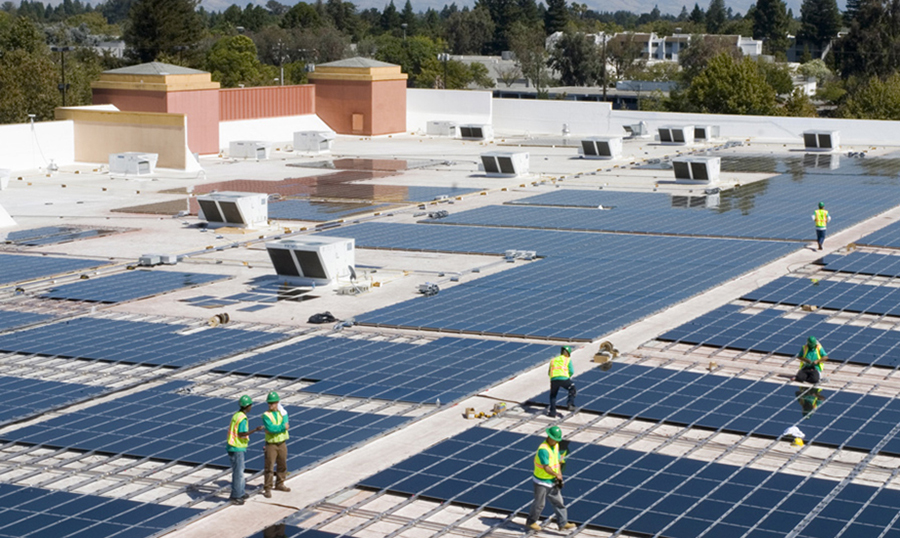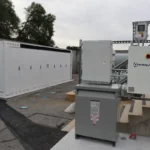Two of our country’s top national energy laboratories published an awesome study last month entitled ‘Exploring Demand Charge Savings from Commercial Solar’. This is the second report in a three-part series, which looks at how solar PV reduces demand charges, published collaboratively by Lawrence Berkeley National Laboratory (LBNL) and the National Renewable Energy Laboratory (NREL). Here are the links to the report:
Summary Briefing Presentation – PDF
We thought that LBNL and NREL did a fantastic job in their study for a few different reasons: (#1) Their analysis was extensive: it measured demand reductions on 9,000 system combinations, across 15 cities, 15 customer types, 10 different PV system sizes, and 4 different PV design orientations. (#2) They clearly documented their methodology, which was practical and easy to follow. (#3) They made some valuable generalizations in their key findings section, which is difficult considering the highly-nuanced nature of the topic. (#4) Their charts did a good job illustrating the variance in results for different types of combinations.
Energy Toolbase’s work in this area
How much demand a solar PV system can reduce is a topic that we have thought about a lot over the last three years. We’ve had numerous conversations with C&I solar developers and financiers on the subject. Since our initial product launch in 2014, users have been able to transparently simulate the reduction of demand charges in Energy Toolbase. During this time our user base has collectively modeled tens of thousands of projects. The types of scenarios that we’ve seen modeled have been widely varied. They’ve utilized many different types of customer load profiles, solar PV system design assumptions, and geographical locations. Our users have also leveraged several different solar production software modeling applications, including HelioScope, PV Watts, PVSyst, PVSim, PV Complete, and NREL’s System Advisor Model.
The recent LBNL/NREL study has been very validating for us. Based on all our work in this area, we have informally reached a lot of the same conclusions that were summarized in the report. This has been reassuring, because ‘demand charge reductions from PV’ can be a controversial topic. As many C&I developers know, demand charge reductions from solar cannot be firmed or guaranteed. That’s because it’s impossible to know with certainty how much energy a customer will use, and solar they will produce, at a given point in the future. One 15-minute usage spike, which coincides with a cloud limiting solar production, could set the Max/Non-coincident demand charge for the entire billing period. This can lead to a lot of variability in the amount of demand that solar reduces from month to month, or year to year. It’s therefore understandable that some C&I solar developers and financiers do not want to bank on or underwrite demand savings into their financial model. But this lack of certainty has led some to draw inaccurate conclusions on this topic. In some cases, we’ve seen bad information get disseminated down to customers. It’s valuable to now have a published study, conducted by two leading energy laboratories, to serve as a more definitive guide on the topic.
Summary of LBNL/NREL key findings:
We wanted to highlight and restate a few of the important key findings from the study. To attribute full and proper credit to the LBNL/NREL report, we’re stating the exact key finding (in bold) as printed in their executive summary report, and then paraphrasing a summary of their supporting arguments.
Under a basic, non-coincident (NC) demand charge design, commercial customers generally achieve low reductions in demand charges from solar.
Demand charge savings for many commercial customers are relatively low under a NC demand charge design because of most commercial customer load profiles that do not align well with PV generation. The study found that for customers with PV systems sized to generate 50% of annual load, rooftop solar reduces demand charges by just 7% in the median case and by less than 15% in about 90% of all cases when based on a NC demand charge.
Demand charge savings may be significantly greater when based on pre-defined peak periods and on longer time averaging intervals.
If a customer’s demand charge is based on a 12-4 pm peak period, commercial solar reduces demand charges by 19% in the median case, and by 40% or more in some cases, which is significantly higher than under a basic, NC demand charge design.
Also, demand charge savings from solar are sensitive to the length of the averaging interval used to compute billing demand. Averaging load over longer periods of time (i.e. 60-min vs. 15-min) can smooth out variability in PV generation due to intermittent cloud cover, as well as better align load and PV generation when peak load occurs later in the day.
Demand charge reductions from solar are heavily dependent on building type.
Demand charge reductions can vary significantly from one commercial building group to another. On a basic NC demand charge design, demand reductions from solar are generally highest for schools and supermarkets, whose load profiles better correspond to PV generation and achieve a mean NC demand charge reduction of 18% for customers with PV systems that generate 50% of their annual load. At the other end of the distribution are apartments and hotels, whose loads tend to peak in the late afternoon and evening, and therefore achieve zero demand charge savings in almost all cases under a NC demand charge design.
Daily load variability and load factors can help a potential solar customer understand the general magnitude of demand charge savings.
The study found that customers with higher load factors are more likely to have lower demand charge savings from solar as do customers with more variable daily peak loads.
Demand charge savings increase with PV system size, but with diminishing returns.
In contrast to volumetric energy charges, demand charge savings do not scale directly in proportion to PV system size. For example, under a basic, NC demand charge design, a school in Phoenix with a PV system sized to meet just 20% of its annual energy needs reduces demand charges by 16% in the median case, but if sized to meet 100% of its annual energy needs reduces demand charges by only 29%. This basically means there is a limit to demand charge reduction, regardless of PV system size.
The degree to which there are diminishing returns with increasing PV system size depends on the commercial customer type. Restaurants, for example, quickly reach their maximum non-coincident demand charge reductions with relatively small PV systems.
Orienting PV panels westward yields, at most, only slight increases in demand charge savings.
Southwest and west-facing panels peak later in the day, coinciding better with load than flat or south-facing panels. The increase in the demand charge savings occur across commercial customer types and demand charge designs but are generally quite modest.
For example, for a school in Phoenix, the average demand charge reduction under a 12-4 pm peak demand charge rises from 31% for a south-facing system to 34% for a southwest and west-facing system. The increase in the demand charge reduction moving from flat to the southwest and west-facing PV panels is roughly similar across customer types and never more than a few percentage points.



